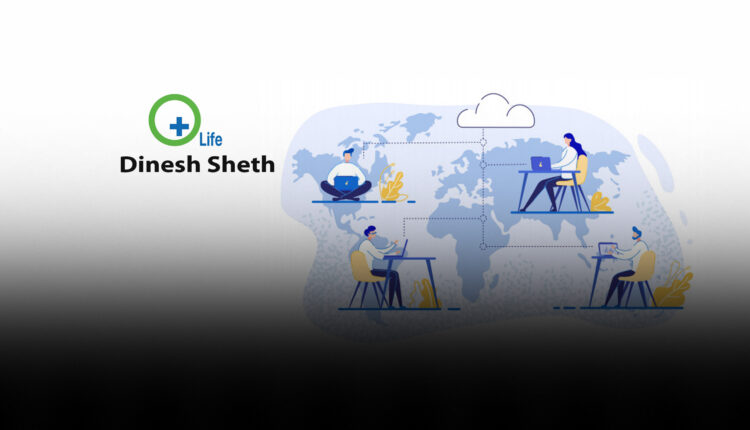During this unprecedented year, many employees have seen significant changes in their day-to-day work schedule. Employees that have never worked remotely prior to 2020 have now spent months working from home and experienced firsthand the dynamics of a remote workforce. As the concept of a workplace has changed, the internal processes and employee expectations have as well.
HR Technology News: TecHRseries Interview with Dawn Glockler, Sr. Director, People at Act-On Software
With the onset of remote work, company culture, creativity and productivity have transformed as well. The real and perceived lack of communication and engagement among employees is a byproduct of remote and socially distanced work, and employers must adjust their current operations to better prepare for the long-term effects of working without a traditional office setting. At a time where social collaboration and creativity can be impacted, employers must work harder to prepare their remote and office personnel for success.
Working from home has not been as detrimental to staff as once predicted. Before the threat of the COVID-19 outbreak, many companies were hesitant to allow for remote work as it was anticipated to be unproductive and ineffective. However, as the workforce made its transition to remote work, the United States and other countries have seen the opposite; remote work has caused an improvement in the productivity of the white collar office workers. Why is this and can this be sustained? What are long term effects of this as we near a full year of remote work? These are some questions companies need to answer as everyone prepares for the new normal.
Understand the new changes and challenges your employees face. With so many new factors contributing to the average workday, there is no one reason to credit for this productivity improvement. Several factors can impact the gains in productivity, such as employees saving time by eliminating their morning and afternoon commute, avoiding distractions from coworkers, dismissing the additional social expectations surrounding office work and restrictions from personal social activities. For example, when attending a meeting, it is often expected for employees to spend time before and after to speak casually with colleagues. Now, employees join meetings seconds before the start time and leave as soon as the meeting concludes.
However, these factors that increase productivity and save time may have long-term negative impacts. For example, the “strictly business” approach to meetings eliminates the informal dialogue that can be vital to brainstorming and cultivating company culture. Often, information discussed in a hallway rather than meetings provide the space in which collaboration takes place to innovate, identify and solve problems.
HR Technology News: TecHRseries Interview with Janet Phillips, Vice President of People, Kong Inc.
Additionally, during these times of remote work, employees are working in different cities, houses and apartments with a unique set of distractions and environments. Not all employees have sufficient space to work without the intrusion of factors such as spouses, parents, children or pets. While working in their homes, employees may struggle to separate their personal life from their career, as both are happening under the same roof. Also, many employees are navigating a new hybrid model of work in which some co-workers are in an office and others remain in their homes or are rotating from time to time.
Introduce new operations to improve performance. With the accumulation of all these benefits and threats, employers must consider how they manage their workforce, how work is assigned, how output is measured and how their benefits programs help employees. New training, education and infrastructure will be essential in managing this remote or hybrid work model and salvaging company culture and creativity.
Human resources (HR) managers should develop additional training, such as conflict management, time management and project management for this new environment, to strengthen work-life balance and skills needed to manage remote work-life. These changes enacted by HR managers and training professionals will also help to avoid health related issues such as loneliness, stress, burnout and depression.
Prioritize communication. When planning to sustain culture, improve productivity or inspire and empower creativity, the right communication is key. It is vital for employees to have flexibility and freedom to receive their communication in the manner they prefer while their environment keeps changing. In addition, health, wellness and benefits resources need to be evolve and be readily available for employees to remain motivated and be able to perform to their best ability. Often, employees are unaware or uninformed about the benefits offered by their company, with the obstacles to receiving answers to their questions and concerns only growing due to the nature of remote work. A comprehensive communication plan with flexibility to use many channels of communications will allow companies to answer employee questions, educate them about workplace benefits while cultivating company culture and encouraging employee retention.
HR Technology News: Here’s What Could Be in Store for Human Capital Management Professionals Now That the 2020 Election is Over
By adjusting to the new normal, employers can expect to embolden a fulfilled staff. By taking these steps to manage an effective remote workplace, employers will be able to sustain productivity, support innovation and creativity and help employees achieve work-life balance. It is vital for employers to help their team prepare for the opportunities and challenges presented by remote work. Though the long-term effects of the remote workforce have yet to be fully understood, companies can improve their employees’ quality of life through proactive changes and attention to communication.
Improving Marketing and Sales Alignment, Adjusting to the New Normal and Scaling Business Growth Despite Covid-19, catch more in these conversations with experts from JotForm, Xactly, Demandbase!

